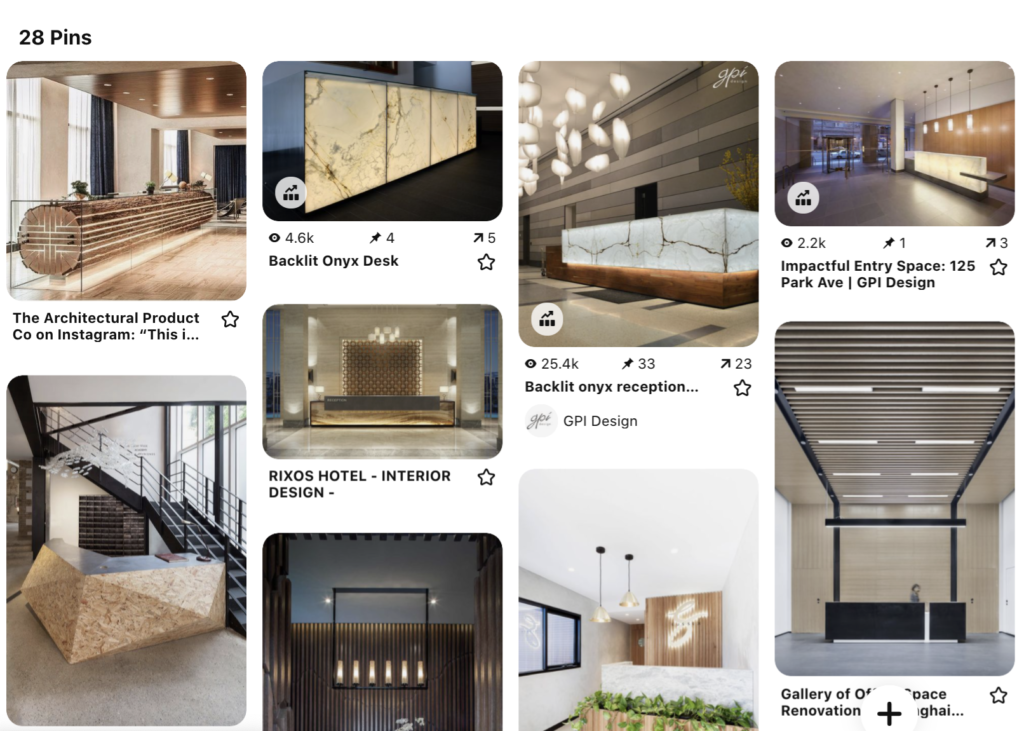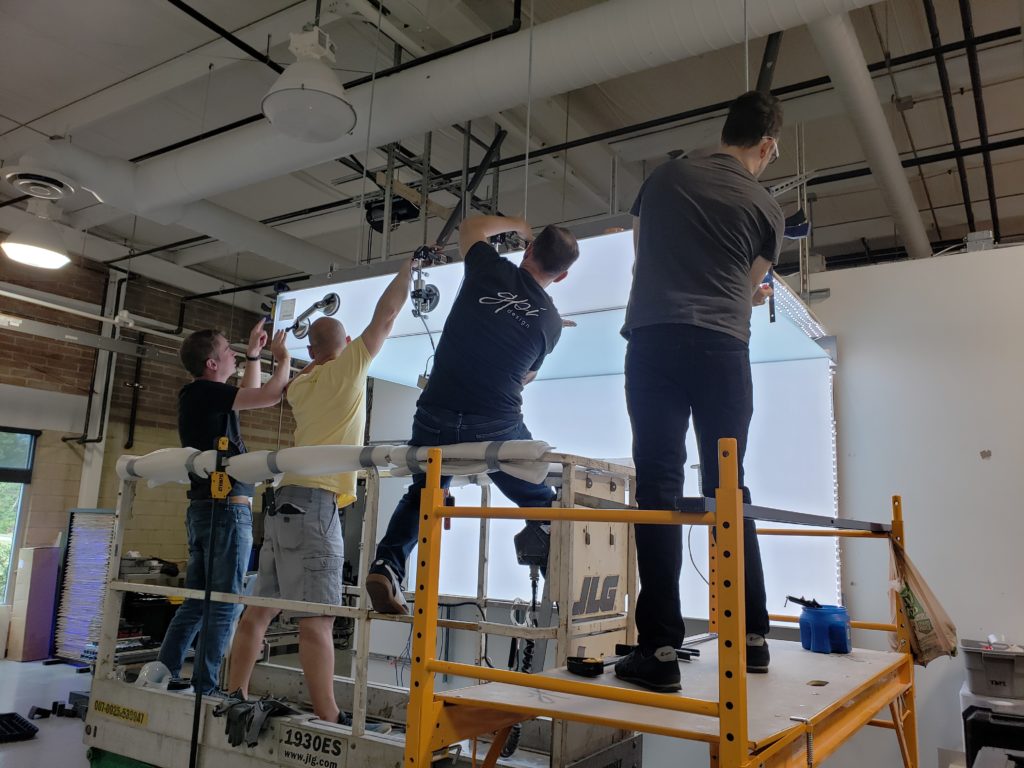Selecting Translucent Stones for Backlighting
Utilizing backlit stone in your interior design is a nod to Mother Nature, now modernized with technology and illumination. Because translucent stone is a building material not seen or used every day, here we walk you through some tips on selecting translucent stones for your next backlit feature.
Did you know that many natural stones are translucent? To achieve appropriate translucency levels in stone, a process of milling and laminating it to glass is used. GPI Design offers DURA-Lite™ Glass-Backed Stone in hundreds of stone varieties, laminated to an ANSI rated glass panel, and cut to fit for each project. DURA-Lite™ can be fabricated with more varieties of stone than you think – onyx, alabaster, quartzite, marble and even some granites. To find which stone may be right for you, first select the tone and vein characteristics you prefer with GPI’s assistance through the process. Once the stone characteristics are identified, designers can select stones that we have categorized as potential matches.
An important consideration in selecting a translucent stone is viewing the transformational qualities in the stone after backlighting is introduced. Many stones change dramatically when backlit. Different backlighting strategies will affect the stones color and patterning as well as the many varying temperatures of light that play a role in the final registration on the stone surface. Combinations of diffusion cavity, depth, filters, scrims, and reflective elements all compound amid successful illumination. One more consideration is the result the structural mechanics both behind and in front of your backlit feature will register on your surface.
You’re right, finding the right translucent stone involves more than a walk through your local stone yard. Always consider your diffusion cavity and light source options, minimize the structural environment, diminish the number of joints, consider panel size preferences and test lighting controls before you make your stone choice. As a resource, here is the process that GPI Design has developed throughout our 25-year history in backlighting natural stones for high-end architectural applications that may provide more guidance through the process.
Step 1: Identify and share your vision.
Do a Google search, browse Pinterest, take photos of stone slabs and feature walls that pique your interest. Keep in mind the following factors:
- Desired colors and veining characteristics
- Overall volume of project (some slabs are only available in very small quantities)
- Panel sizes
- Desired levels of translucency
- Relationship to backlighting environment
- Availability and rarity of stones in relation to your budget
Step 2: Establish a direction and a budget.
This is when you can begin working with a stone expert who specializes in stone sourcing and the creation of translucent backlit features like GPI Design. It’s typically most effective if you have a packet of imagery from Step 1 that explains your vision and better explains your use of the material and its environment. As it is often difficult to describe the nuances of natural stone in words alone, it is important to discuss the feasibility of the stone based on your application and begin to establish a budget. If you’re working with GPI Design, this is the point we guide the selection by using our knowledge with the stone’s likelihood to illuminate well. Is this a stone that will provide the aesthetic you need AFTER it’s backlit?
Step 3: Select final stone variety.
At this stage of the project GPI Design, or the party responsible for supplying the stone, will be contracted for the job. Armed with a full understanding of the aesthetic goals, desired characteristics for the stone, and necessary yield for the project from Step 2, the final variety can now be located and procured. When GPI is handling the stones procurement, we first contact our quarries across the world to locate matching material. Sometimes this travel takes us around the world on an adventure, or it may only be a car ride away! Once we identify where in the world the matching stone is located, our team – and often clients – will travel to that exact location to inspect the material and purchase the exact slabs to be used on the final job. If the client cannot travel with us on the sourcing trip, we take hi-res imagery of slabs available in the field and send for approval via captured images. Once approved via photos, the exact slabs are secured and transported back to our fabrication facility.
Step 4: Review the stone in mock-up, with backlighting.
This is most important. You’ve spent time, energy, and resources in selecting your stone and now is the time to see the fruits of all that labor. One full scale panel of your selected stone should be thinned and laminated to glass and brought into a location where you can see it with the actual backlighting fixtures, which will be used to illuminate it in the final installation. The LED backlighting fixture should be tunable to show you different variations of color temperatures so that you can decide which one best showcases the inherent qualities of the stone. Additionally, you will be able to play with cool vs. warm tones of backlighting and how that changes your overarching design aesthetic.
It’s at this point changes can still be made. Perhaps the stone layer is still a little too thick and should be thinned so the figural movement in the stone becomes more defined for the final install. Maybe the variety is more translucent than originally thought, and the diffusion cavity needs to be increased or a filter or scrim added to help blend the lighting and reduce diode evidence. For the exact reason stone is a prized material – its organic composition is compliments of the chef, Mother Nature! – it can also harbor some unforeseen visual challenges. Mocking a panel up with backlighting affords the opportunity to dial in the aesthetics so the final installation captures your vision exactly.
Four Steps and voila! There you have your very own translucent stone design, custom made to all your preferences. Designing with translucent stones brings endless possibilities, and we are happy to bring all your design needs to light, pun intended! Remember, structure will change the lighting cavity, wire management needs careful consideration, sophisticated lighting controls are worth investigating, and joint lines and surface polish will also play a part. Our advice? Don’t leave the details to multiple trades, use a turnkey provider with experience in these backlit features for best results.


